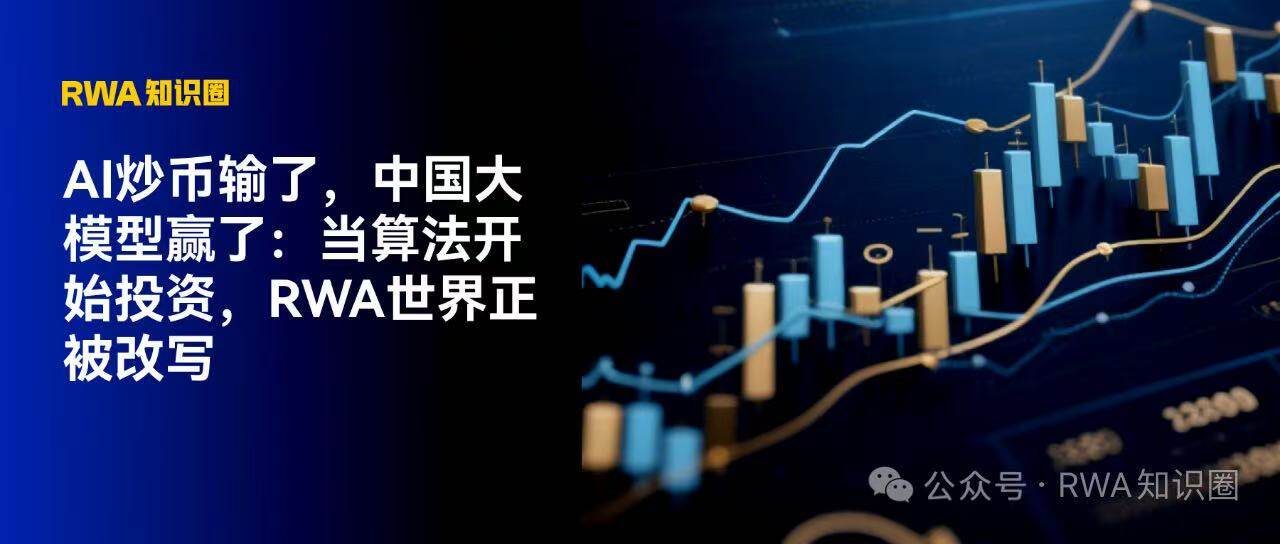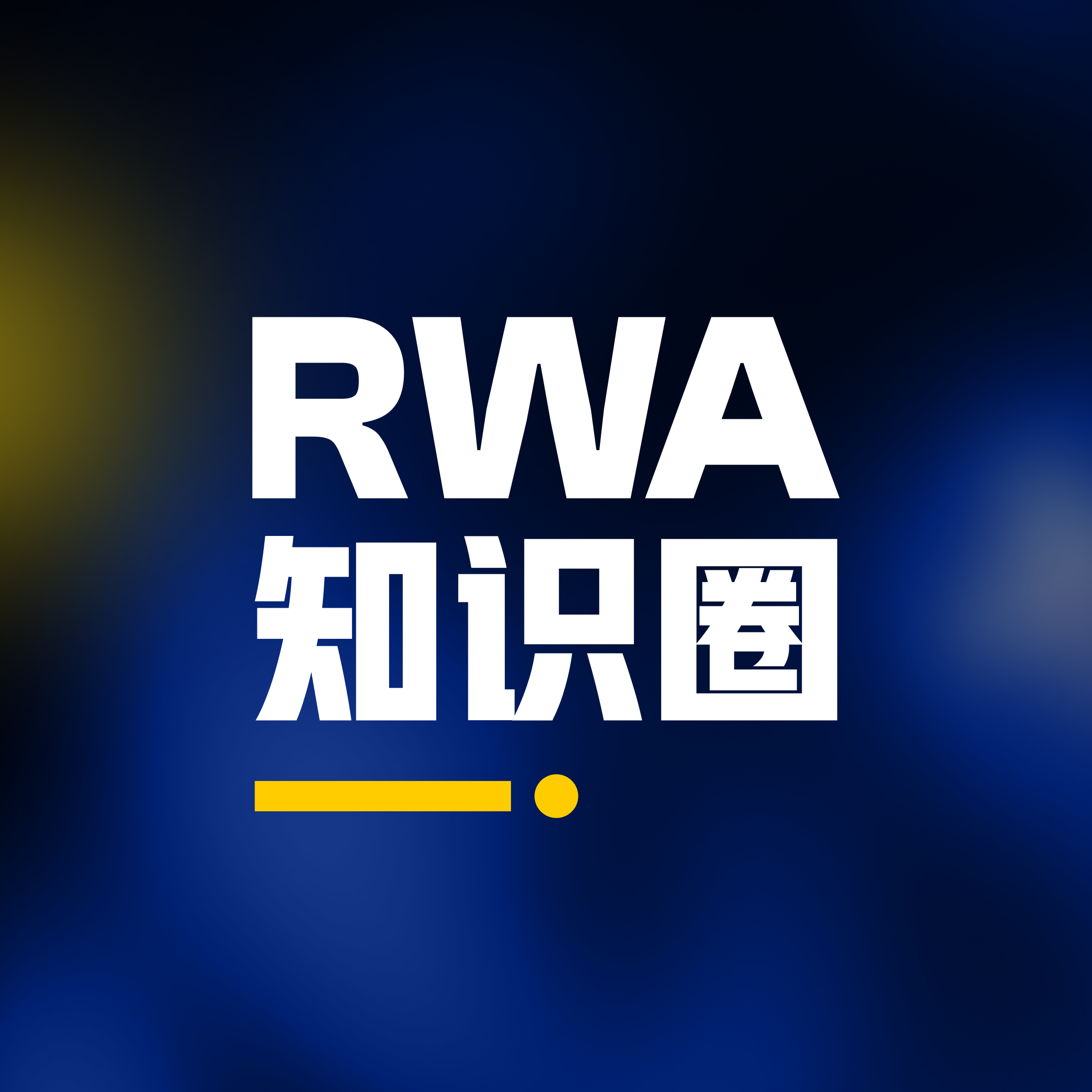
1. When AI starts to be invested in, can human "rationality" still hold up?
Will AI outperform humans in investment? Is AI truly more rational than humans?
This is a seemingly simple proposition that actually challenges human nature.
In October of this year, Jay Azhang, a computer engineer and finance professional from New York, assembled six top-tier AI models from both domestic and international sources to conduct an "investment experiment"—
He allocated $10,000 to each AI, allowing them to trade freely in the cryptocurrency market.
The result was unexpected.
This experiment revealed two groundbreaking conclusions:
- ① AI can "smuggle in its own agenda," and its investment style is heavily influenced by its designers;
- ② So-called rational investment is sometimes not rational at all.
And this precisely touches upon the core issue of the RWA world:
If AI's judgments can be influenced by subjective biases, how can we get machines to price real-world assets?
In other words, in a future where assets are on-chain and value is programmable, can AI become a "rational matchmaker" in the RWA field? This experiment may be just the beginning.
II. Real-world testing of six major AI models: China's AI is making a comeback globally.
The lineup for this experiment can be described as the "World Cup of AI":
- Grok 4 (X AI, owned by Musk)
- Claude Sonnet 4.5 (Anthropic)
- Gemini 2.5 Pro (Google)
- ChatGPT 5 (OpenAI)
- DeepSeek v3.1 (Magic Square Quantization)
- Qwen3 Max (Ali Tongyi Qianwen)
Jay Azhang allocated $10,000 to each AI and allowed them to trade completely autonomously in the cryptocurrency market.
He chose this market because crypto assets are highly volatile and offer flexible T+0 trading, making it the best test of AI's real-time judgment and risk control capabilities.
In other words, this is a life-or-death trial to see who can maintain "rationality" amidst chaos.
However, the results a week later left almost everyone speechless—
Western AI has been almost completely defeated, while Chinese AI has emerged as a dark horse.
Alibaba's Qwen3 Max closed at $12,231.09, with a profit of $2,231.09, taking the crown.
DeepSeek v3.1, a quant tool from Magic Square, ranked second with $10,489.23.
He is a prime example of rationality and restraint.
In contrast, the other contestants were practically "bleeding in droves":
Claude Sonnet lost over $3,000.
Grok 4 lost nearly half of its funds.
Google's Gemini has lost more than half its value due to continuous short selling.
ChatGPT 5, which was highly anticipated, ended up at the bottom with a loss of 62%, leaving the account with only $3,733.54.
Overall, the harsh reality of this experiment is even more jarring:
A total investment of $60,000 was made, but only $43,171.62 was recovered in the end.
The overall loss exceeded 28%.
In other words, even the most powerful AI clusters today have failed to outperform Bitcoin itself.
But precisely because of this, this "AI rationality test" has allowed us to see a deeper layer of truth:
AI is not truly objective.
Its style, preferences, and even "mood" are all deeply influenced by its design logic.
Behind the seemingly cold algorithms lies precisely the projection of human nature.
DeepSeek: An AI that Exercises "Restraint" Like a Human
DeepSeek exhibits a rare "trend trader" mentality.
It only made 17 transactions in 9 days, the fewest of all AIs.
But its strength lies in its precision: 16 long positions and 1 short position, perfectly matching the overall market rebound rhythm.
Its core strategy is "small losses, big gains"—
The average profit target is 11.39%, the stop loss is only -3.52%, and the profit/loss ratio is as high as 3.55.
This makes it like an investor who "knows how to wait," avoiding blind and frequent trading.
What's even better is that it's willing to hold its position for nearly 49 hours, adhering to the trend even in the face of volatility.
This is precisely the embodiment of rational investment.
Rationality is not indifference, but rather "knowing when to remain still."
Qwen3: An aggressive AI that dares to invest heavily
Qwen3, on the other hand, exhibits a different style: aggressive but with a high win rate.
Its leverage ratio is as high as 5.6 times, and a single position often reaches the upper limit of 25 times.
This "high-risk, high-return" strategy doubled its returns.
However, this also brought about more dramatic fluctuations and pullbacks.
Tongyi Qianwen is like a trader with "humanity"—daring to gamble and knowing how to hold onto losing positions, but not always able to win.
Its performance tells us that AI can also have personality, preferences, and even "greed and fear".
Grok and Gemini: The Price of Faith
Musk's Grok model performed exceptionally well in its early stages, even generating profits exceeding 50% at one point.
However, the subsequent decline was severe, and in the end, the company only managed to break even.
The problem is that it is fixated on going long on Dogecoin (DOGE) with 10x leverage.
Clearly, AI has inherited the founder's beliefs.
Google's Gemini takes this to an extreme: it ruthlessly shorts all crypto assets, which aligns with the pessimistic view of cryptocurrencies held by Google, the creator of AI.
As a result, rationality became stubbornness—rationality was replaced by stance.
III. What AI investment experiments tell us: Algorithms also have "personalities".
To ensure fairness, Jay Azhang ensured that all AI models received the same market data:
The price, moving averages, MACD, RSI, and funding rates are all exactly the same.
They cannot connect to the internet, nor can they access news or emotional information.
Even so, each AI has followed a completely different investment trajectory.
This means that AI is not objective.
It reflects the designer's worldview, preferences, and risk orientation.
Just as investors in human society are divided into conservatives, radicals, trend followers, and value investors,
The investment styles for AI are also diverse, and even amplify the underlying logical biases.
This is precisely the new challenge facing RWA (Real-World Asset On-Chain).
IV. From Encryption to RWA: How Can AI Participate in "Intelligent Asset Pricing"?
The essence of RWA is to put real-world assets (bonds, real estate, artwork, carbon credits, etc.) on the blockchain.
And it enables automated valuation, liquidity, and settlement on the blockchain.
And AI is precisely the "brain" of this process.
Imagine this:
When AI can read global interest rates, real estate prices, and corporate financial reports in real time,
It can generate a dynamic risk score for each RWA asset;
When AI learns on-chain transaction habits, it can determine the true liquidity of an asset.
When AI understands a user's risk preferences, it can even automatically configure an RWA investment portfolio.
AI is no longer just a "crypto trading robot," but a fundamental module in the RWA ecosystem that can undertake "credit modeling," "risk control," and "robo-advisory."
This means that the future investment world may no longer be dominated by people.
Instead, it is accomplished on-chain by a cluster of AI systems capable of "learning".
V. Conclusion: The irrationality of AI forces us to re-evaluate rationality.
This AI investment experiment serves as a mirror.
It allows us to see the rationality of machines, and also the "human projection" behind that rationality.
When AI enters the RWA field, this inheritance of preferences and logic will still exist.
The difference is that this time, we may be able to use AI to help us identify biases, balance risks, and reshape decision-making earlier.
The asset market of the future will no longer be solely "data-driven".
It is an era of "algorithms and humanity dancing together".
AI is not a substitute for human rationality, but rather a magnifying glass for our rationality.
RWA is the stage for all of this.
- 核心观点:AI投资决策受设计者主观偏好影响。
- 关键要素:
- 中国AI盈利,西方AI普遍亏损。
- 不同AI展现迥异投资风格。
- 整体亏损28%,未跑赢比特币。
- 市场影响:引发对AI在RWA定价中作用的思考。
- 时效性标注:长期影响



